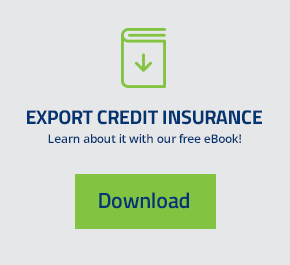The Export-Import Bank of the United States (EXIM) held its 2015 Annual Conference April 23 – 24. At the conference, four business leaders joined Sean Mulvaney, a member of EXIM’s Board of Directors, for a breakout session on short-term finance solutions. Panelists discussed how EXIM equipped their companies to overcome obstacles and grow their export sales.
In part three of this series, we’ll take a look at how Howe Corporation leveraged EXIM support to unlock financing and expand into new markets.
Mary Howe, President, Howe Corporation
William Howe started Howe Corporation—a Chicago-based company—in 1912. Howe recognized the need for improvement in the refrigeration industry while working as a mechanic at a small dairy and ice cream plant. Soon Howe and his three sons were designing, producing and servicing state-of-the-art refrigeration equipment on their own. Today, this fourth generation, woman-owned business manufactures and ships commercial and industrial refrigeration equipment around the globe. Mary Howe, President and great-granddaughter of founder William Howe, participated in breakout session and discussed the benefits of EXIM export credit insurance.
Howe Corporation had decades of experience exporting prior to working with EXIM. The company used foreign accounts receivable from its export sales as collateral for working capital loans. Suddenly, the company’s bank stopped accepting those assets and they were no longer eligible for inclusion in the borrowing base.
“Due to the regulatory climate,” Howe said, “I got the dreaded call from my bank that they could no longer accept my foreign receivables as collateral.”
Howe’s borrowing power diminished with that call, which presented the company with a serious liquidity challenge, given the nature of its operations.
“The product we make is a relatively long lead time product,” Howe explained.
Extended lead times mean longer cash conversion cycles for manufacturers. That is, the longer the lead time, the longer the period between a dollar spent on materials and a dollar received from a buyer. A working capital line of credit is crucial to bridging this gap. Howe’s was gone.
“When you watch $500,000 of working capital evaporate, it decreases your confidence,” Howe said.
Howe Corporation turned to its broker, Trade Acceptance Group (TAG), for advice on how to address the situation and access cash flow. TAG introduced the company to EXIM and its export credit insurance program. Export credit insurance protects an exporter’s accounts receivable against foreign buyer nonpayment. If a foreign buyer fails to pay its invoice, EXIM pays the exporter a percentage of the amount owed (up to 95 percent).
The upshot for Howe Corporation? Banks otherwise unable or unwilling to lend against foreign receivables will often do so if the receivables are insured by an EXIM policy. The foreign collection risk to the lender is mitigated by the full faith and credit of the U.S. government. Insured exporters can often assign the proceeds of an export credit insurance policy to their lenders, who will amend existing lines of credit to include foreign receivables backed by EXIM.
With its foreign receivables insured, Howe Corporation was able to secure the working capital it needed from its lender. “It was well worth every penny,” Howe said. “EXIM staff members are experts at risk management. It’s given us more confidence going into new markets and offering credit terms."
